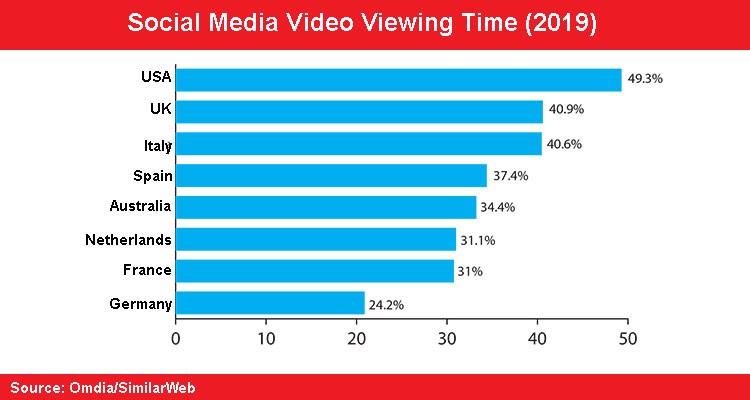English
Omdia: Linear TV continues to dominate global audience
Despite the strong increase in OTT subscribers and a greater number of digital platforms, linear television is still relevant in eight top international markets, according to the consultancy company Omdia.Even with declining audience numbers, linear television remains the dominant way of viewing content for consumers in USA and other eight major economies, according to a recent report from Omdia. The media accounted for 63% of television viewing in the US last year compared to 16% for long-format viewing and 12% for PVR television, according to the consultant's Cross-Platform Television Viewing Time Report.
Linear TV share decreased from 67% in 2018. And there were similar trends in most countries followed by the report such as Australia, the Netherlands, Spain, Italy, Germany, France and the UK. Average linear TV viewing time decreased in all but one market, with falls ranging from four minutes in Italy to 19 minutes in the USA. The Netherlands was the only one that did not see a decrease, but remained unchanged from last year.
Rob Moyser, an analyst at Omdia, said: ‘Although traditional television viewing is experiencing a general decline, this form of entertainment remains central to the viewing habits of most people. As a result, it still accounts for the majority of views in all the countries we follow. In some of them, linear strongly dominates the visualization, totaling 90% in Italy, for example. ’
On the nonlinear front, online long-form video is the main platform driving growth in 2019. It was a key area of growth in all markets, driven largely by Netflix and Amazon Prime. Growth in content on these platforms last year ranged from 55% in Australia to 10% in the Netherlands.
The growth of OTT subscribers, the launches of "Direct To Consumer" platforms and an increase in free and pay TV alliances are driving the growth in online video viewing in the long term, the consultant said. However, the fastest growing segment of the non-linear market is social media. Analysis in the same countries show increases by 10 minutes in 2019, a growth rate that outpaced all other forms of non-linear television video. USA led the display of social networks, with 49.3 minutes in 2019.

This advance was driven in part by the massive growth of the Chinese video-sharing service TikTok. ‘Their success is one of the outstanding stories of 2019, with the social media application growing at historical rates,’ said Moyser. And he completed: ‘This rate of increase was so great that it quickly became the most popular social media platform for watching videos in Germany and the second most popular app in the UK, France and the Netherlands.’
The time spent watching video content on social media increased by 10 minutes in 2019 to an average of 41 minutes per person per day in the eight markets analyzed. In comparison, all other forms of nonlinear visualization increased by a cumulative seven minutes over the year.
According to Omdia, the average total daily viewing time for the analyzed markets increased to 306 minutes per person, per day in 2019, an increase of four minutes year over year. TV saw a massive increase in consumption in March and April 2020 after the implementation of blockade measures in all covered countries. Italy had the highest total viewing time in Europe in March at 5 hours 46 minutes.
For example, Italians spent 346 minutes a day in front of the television screen in March 2020, an increase of 34.1% over the same period last year, the highest total viewing time in Europe.